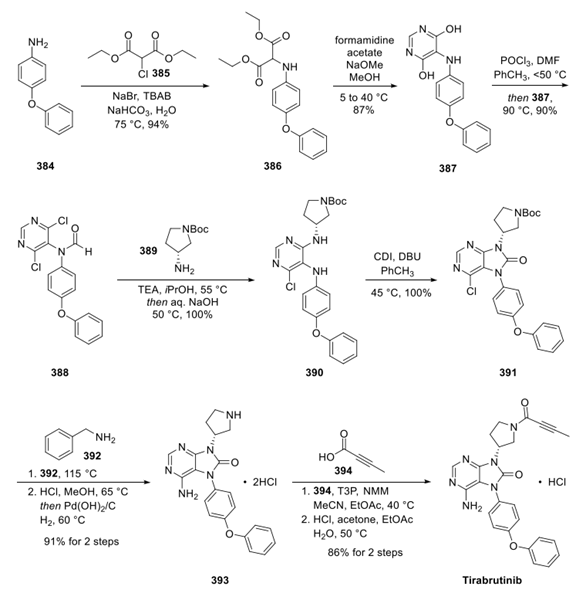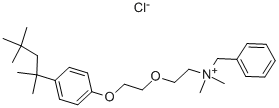The uses of Benzethonium chloride
Jan 8,2024
Description
Benzethonium chloride is one of the Cationic detergents, including benzalkonium chloride, methylbenzethonium, and cetylpyridinium chloride. They are quaternary ammonium compounds that often contain a halide. They may be in automatic dishwashing powders, fabric softeners, hair products, sanitizers, and disinfectants.
Uses
Benzethonium Chloride (BZT-Cl), also known as hyamine, is a water-soluble cationic surfactant. Benzethonium chloride exhibits broad-spectrum microbicidal activity against bacteria and viruses, human tumor cells, and pathogenic free-living amoebae Acanthamoeba lugdunensis and A. quina. Siles et al. identified benzethonium chloride as a lead compound in a small-molecule screen for inhibiting Candida albicans biofilm formation[1].
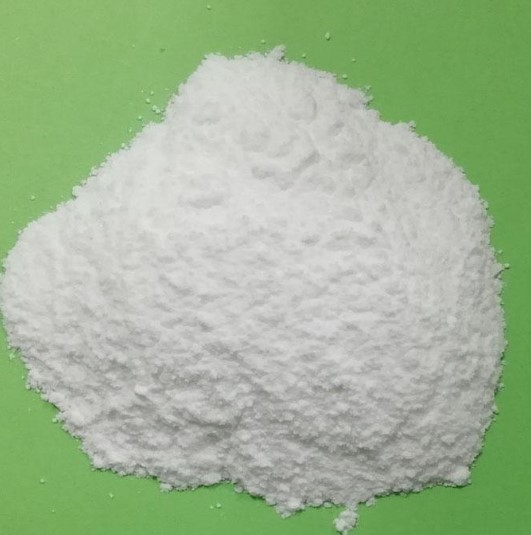
It was used in several applications such as detergents, deodorants and astringents, antimicrobial agents, a disinfectant in the food industry, cosmetics and toiletries such as mouthwashes, electrochemical applications, membrane separation, clay nanocomposite, drug delivery agents by incorporating drugs and biomaterials.
This compound, an FDA-approved antiseptic disinfectant, has been shown to fight against multiple cancers, such as lung cancer, head and neck squamous cell carcinoma, and liver cancer. BZN suppressed the proliferation, migration, and invasion of Osteosarcoma (OS) cells in vitro and in vivo but simultaneously promoted the massive accumulation of cytoplasmic vacuoles [2]. Mechanistically, BZN repressed the ERK1/2 signaling pathway, and the ERK1/2 activator partially neutralized the inhibitory effect of BZN on OS cells.
Benzethonium chloride (a topical disinfectant) from the chemical library showed significant bactericidal activity against X. fastidiosa. Both menadione and benzethonium chloride foliar spray (15 and 5 mM, respectively) and soil drench (5 and 25 mM, respectively) treatments were equally effective in reducing Pierce's disease (PD) symptoms by 54 to 59% and revealed that the effects of both chemical treatments became systemic[3]. As a surfactant, it could cause leakage of chlorophyll pigments from the cut sites. However, benzethonium chloride treatment was not significantly detrimental to cellular membranes and chlorophyll integrity at lower concentrations.
References
[1] Maillard, Jean-Yves. “Impact of benzalkonium chloride, benzethonium chloride and chloroxylenol on bacterial antimicrobial resistance.” Journal of Applied Microbiology 133 6 (2022): 3322–3346.
[2] Haichao Xia. “Inhibition of Macropinocytosis Enhances the Sensitivity of Osteosarcoma Cells to Benzethonium Chloride.” Cancers 15 3 (2023).
[3] S Zhang. “Identification and Characterization of Menadione and Benzethonium Chloride as Potential Treatments of Pierce’s Disease of Grapevines.” Phytopathology 109 2 (2019): 233–239.
- Related articles
- Related Qustion
Supplementation with pyridoxal 5'-phosphate monohydrate can synthesize neurotransmitters such as dopamine and serotonin, maintaining a healthy nervous system.....
Nov 4,2025Biochemical EngineeringTirabrutinib is synthesised using 4-phenoxyaniline as a raw material by chemical reaction in the presence of a phase transfer catalyst (TBAB).....
Jan 8,2024InhibitorsBenzethonium chloride
121-54-0You may like
Benzethonium chloride manufacturers
- Benzethonium chloride
-
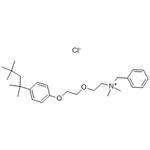
- 2025-12-20
- CAS:121-54-0
- Min. Order:
- Purity: 0.99
- Supply Ability:
- Benzethonium chloride
-

- $0.00 / 25Kg/Drum
- 2025-12-19
- CAS:121-54-0
- Min. Order: 1KG
- Purity: 97%-103%
- Supply Ability: 1000kgs
- Benzethonium chloride
-
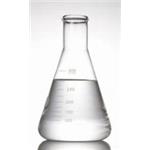
- $999.00/ kg
- 2025-12-16
- CAS:121-54-0
- Min. Order: 1kg
- Purity: 99%
- Supply Ability: 5000





